Opinion
Truth about Sihela ambassadors to court of Roman Emperor Claudius
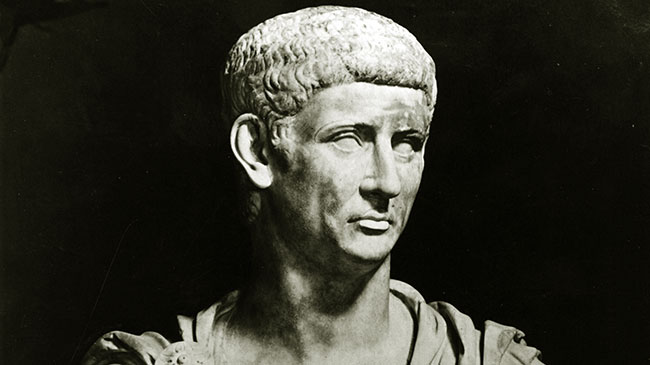
By Rohana R. Wasala
rrwasala@gmail.com
At the conclusion of a thoughtful feature article, under the title, ‘A new identity for Sri Lanka’, in The Sunday Island of 25 June, 2023, Uditha Devapriya, a young journalist I admire for the quality of his writing, refers to what he calls a minority view that he shares about Sri Lanka’s contemporary culture. It is that contemporary Sri Lankan culture is ‘derivative and predicable’. To be frank, his concept of culture is not clear to me; nor what he exactly means by the phrase ‘derivative and predicable’. But in the same breath he explains that this quality of present-day Sri Lankan culture is ‘less of a weakness, less of a limitation, than it may appear’ because ‘cultures and histories progress through evolution, and evolution, it must be conceded, involves appropriation, sometimes imitation.’ Devapriya adds:
‘Thus, instead of looking condescendingly down on our “modern” culture or being laid back and complacent about our “glorious past”, we should avoid both extremes and strive to use our identity the way our ancestors did. The four ambassadors sent to the court of Emperor Claudius centuries ago were all representative of this identity: it has been surmised that they were non-Sinhalese, that they were all Tamils. The Romans did not bother about this. As H. A. J. Hulugalle has noted, all they were concerned with was that these ambassadors came from Ceylon, and that they were Sri Lankans first and Sri Lankans last. Perhaps that should be our strategy, our way forward, our redemption.’
I generally agree with the idea that we should ‘use our identity the way our ancestors did’. In fact, this is broadly similar to what I wrote at the end of a long article (not published in The Island) about racism and nationalism in August 2021. So, let me quote the concluding paragraph of my article in full:
‘It is internal divisions that encourage external attacks on our independence. The greatest potential for national unity, in my view, comes from the easy religio-cultural symbiosis between the Tamil Hindus and the Sinhala Buddhists. Since the last-mentioned circumstance above – geographic location – cannot be changed by any means, it must be accepted as an unalterable physical reality in a nationally proactive spirit, not as a curse, but as a blessing.
It is up to the youth of the country of diverse ethnic backgrounds untainted by historical baggage to take up this challenge and forge ahead as one sovereign nation without allowing foreign powers to walk over us, as they have done over the last 73 years. I wrote this long essay, not to stoke fires of racial hatred, but to douse them by ascertaining the truth about our past as far as possible, which will enable us to see our way forward more clearly.’ (Please read 75 years for 73 years, as this was written two years ago.)
Now to deal with the crass lie that Devapriya reproduces from some distortionist source about the historic delegation of four Sinhalese ambassadors sent to the court of the Roman emperor Claudius by king Bhatikabhaya Tissa of Sihela/Sinhale (the European name ‘Ceylon’ is a corruption of the original name Sihela) in the first century BCE. The ambassadors from Sihela were all Sinhalese (not Tamils), led by a member of the reigning Sinhalese royal family, whose father himself had been a diplomat sent to China on a similar mission.
This information is well documented history backed by foreign records. King Bhatikabhaya’s reign was a time of peace and plenty according to the ancient chronicles. But the Mahavamsa (Chapter 36) says little about this king. The name given there is Bhatika Tissa. His reign was 24 years. The services he did to the Buddha Sasana and his developmental projects, described in other chronicles, are just glanced at by the Mahavamsa author. (Current entries about Ceylon history in Wikipedia are mostly anti-Sinhalese and anti-Buddhist distortions. It is up to our patriotic young scholars and historians to set these records right.)
I wrote about the Sinhalese ambassadors in the Roman court and why they went there in the same article written two years ago. I am quoting below the relevant section of my previous article (which was not published in The Island, probably because of non-publishing days due to communication disruptions caused by the Covid pandemic).
Sinhalese ambassadors in the court of emperor Claudius
The Roman historian Pliny the Elder (23-79 CE) in his Natural History gives a vivid account of a royal embassy, consisting of four members, with a person called Raki, as its leader from the court of king Bhatika Abhaya Tissa (38-66 CE), visiting the imperial Roman court during the reign of the emperor Claudius (41-54 CE) to negotiate the purchase of red coral from there. The coral was for making an ornamental net to cover the Maha Tupa (Ruvanveli Maha Saeya) at Anuradhapura as an offering to the sacred monument. The fact that Ptolemy (c. 100 – c. 170) made his map of Taprobana (Taprobane as foreign visitors at that time called Sinhale) significantly larger than it actually was relative to his map of what is today called India to the north, signifies the importance he attached to the island as a country.
The account of Annius Plocamus, a Roman tax collector from the Mediterranean region, (who mediated the royal ambassadorial visit during king Bhatika Abhaya Tissa’s reign (20 BCE – 9 CE)), currently available in the Wikipedia, provides a fine example of the deliberate distortion of Sinhalese history that has been carried on for nearly a century by certain Tamil racist historians. The Wikipedia entry refers to a certain Tamil writer by the name of T. Isaac Tambyah, author of ‘Psalms of Saiva Saints’ (1925). Isaac Tambyah assumes that the name given by Pliny of the leader of the embassy Rachias is a version of Rasaiah!
He must have pronounced the name as Rashias instead of Rakias. Rasaiah is familiar to us as a common Tamil name. (Actually, to be fair by Isaac Tambyah, he only repeats an obviously uninformed guess that had been made by British governor Emerson Tennent (1804-1869) that the mispronounced Rachias suggested that the embassy was sent to Rome by an alleged Rajah of Jaffna’ It is absolutely certain that there were no permanent Tamil residents in Sihela until the 10th century CE. (The governor had been misled by a Tamil zealot’s figment of imagination for there were no Tamil rulers in Jaffna.
Nor Jaffna either! The area was known as Dambakolapatuna in Sinhala (Jambukolapattana in Pali) in those pre-Christian ties. Dambakolapatuna (or Jambokola pattana in Mudliyar L.C. Wijesinghe’s 1889 translation of The Mahavansa Chapter XVIII) was where Sangamitta Theri disembarked with the Sri Maha Bodhi sapling in the third century BCE. There is no doubt that a Tamil distortionist had fed Tennent with wrong information! The same Wikipedia account suggests that the embassy was prompted by a trivial discovery of the sincerity of Romans by the king. The late Dr D.P.M. Weerakkody, Western Classics scholar, wrote a paper about historical Sri Lanka-Rome relationships in 2013. It was obvious to me that Dr Weerakkody never took the Tamil historian’s claim that Pliny’s Rachias was ‘Rasaiah’ seriously.
Historical truth of the Sinhalese embassy to Rome
The historical truth about the first century Sinhalese embassy to Rome is well established. Authoritative historians have found that the name Rachias is a corrupt form of the Sinhala name Raki or Rakiya, one of the typically short Sinhala names that recurs in a number of inscriptions as distinguished professor in Archaeology Raj Somadeva of the University of Kelaniya, who is an alumnus of Uppsala University, Sweden, has clearly pointed out. He has provided much documentary and epigraphical evidence to prove this. Pliny himself has given a detailed account of Rachias or Raki, which shows that Raki was an important personage, indeed, a scion of the Sinhalese royal family.
Raki’s father was an ambassador, too. He was employed by the king of Sinhale of the time to lead an embassy to China. For Raki to represent the Sinhalese king in the Roman court, he had to be of the Sinhala royal family. He won’t have insulted the emperor by sending ambassadors under the leadership of a non-Sinhala, non-native commoner called Rasaiah! Can you imagine that a king who was rich enough to buy red corals to make a huge net or jacket to adorn the stupendous Ruvanveli Maha Saeya would do such a thing? (The purpose of the embassy was to negotiate the purchase of those red corals.)
Opinion
Thoughts for Unduvap Poya
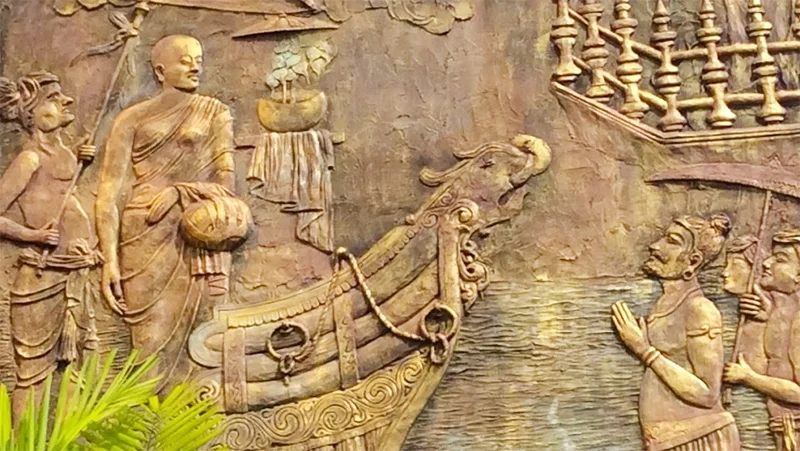
Unduvap Poya, which falls today, has great historical significance for Sri Lanka, as several important events occurred on that day but before looking into these, as the occasion demands, our first thought should be about impermanence. One of the cornerstones of Buddha’s teachings is impermanence and there is no better time to ponder over it than now, as the unfolding events of the unprecedented natural disaster exemplify it. Who would have imagined, even a few days ago, the scenes of total devastation we are witnessing now; vast swathes of the country under floodwaters due to torrential rain, multitudes of earth slips burying alive entire families with their hard-built properties and closing multiple trunk roads bringing the country to a virtual standstill. The best of human kindness is also amply demonstrated as many risk their own lives to help those in distress.
In the struggle of life, we are attached and accumulate many things, wanted and unwanted, including wealth overlooking the fact that all this could disappear in a flash, as happened to an unfortunate few during this calamitous time. Even the survivors, though they are happy that they survived, are left with anxiety, apprehension, and sorrow, all of which is due to attachment. We are attached to things because we fail to realise the importance of impermanence. If we do, we would be less attached and less affected. Realisation of the impermanent nature of everything is the first step towards ultimate detachment.
It was on a day like this that Arahant Bhikkhuni Sanghamitta arrived in Lanka Deepa bringing with her a sapling of the Sri Maha Bodhi tree under which Prince Siddhartha attained Enlightenment. She was sent by her father Emperor Ashoka, at the request of Arahant Mahinda who had arrived earlier and established Buddhism formally under the royal patronage of King Devanampiyatissa. With the very successful establishment of Bhikkhu Sasana, as there was a strong clamour for the establishment of Bhikkhuni Sasana as well, Arahant Mahinda requested his father to send his sister which was agreed to by Emperor Ashoka, though reluctantly as he would be losing two of his children. In fact, both served Lanka Deepa till their death, never returning to the country of their birth. Though Arahant Sanghamitta’s main mission was otherwise, her bringing a sapling of the Bo tree has left an indelible imprint in the annals of our history.
According to chronicles, King Devanampiyatissa planted the Bo sapling in Mahamevnawa Park in Anuradhapura in 288 BCE, which continues to thrive, making it the oldest living human planted tree in the world with a known planting date. It is a treasure that needs to be respected and protected at all costs. However, not so long ago it was nearly destroyed by the idiocy of worshippers who poured milk on the roots. Devotion clouding reality, they overlooked the fact that a tree needs water, not milk!
A monk developed a new practice of Bodhi Puja, which even today attracts droves of devotees and has become a ritual. This would have been the last thing the Buddha wanted! He expressed gratitude by gazing at the tree, which gave him shelter during the most crucial of times, for a week but did not want his followers to go around worshipping similar trees growing all over. Instead of following the path the Buddha laid for us, we seem keen on inventing new rituals to indulge in!
Arahant Sanghamitta achieved her prime objective by establishing the Bhikkhuni Sasana which thrived for nearly 1200 years till it fell into decline with the fall of the Anuradhapura kingdom. Unfortunately, during the Polonnaruwa period that followed the influence of Hinduism over Buddhism increased and some of the Buddhist values like equality of sexes and anti-casteism were lost. Subsequently, even the Bhikkhu Sasana went into decline. Higher ordination for Bhikkhus was re-established in 1753 CE with the visit of Upali Maha Thera from Siam which formed the basis of Siam Maha Nikaya. Upali Maha Thero is also credited with reorganising Kandy Esala Perahera to be the annual Procession of the Temple of Tooth, which was previously centred around the worship of deities, by getting a royal decree: “Henceforth Gods and men are to follow the Buddha”
In 1764 CE, Siyam Nikaya imposed a ‘Govigama and Radala’ exclusivity, disregarding a fundamental tenet of the Buddha, apparently in response to an order from the King! Fortunately, Buddhism was saved from the idiocy of Siyam Nikaya by the formation of Amarapura Nikaya in 1800 CE and Ramanna Nikaya in 1864 CE, higher ordination for both obtained from Burma. None of these Niakya’s showed any interest in the re-establishment of Bhikkhuni Sasana which was left to a band of interested and determined ladies.
My thoughts and admiration, on the day Bhikkhuni Sasana was originally established, go to these pioneers whose determination knew no bounds. They overcame enormous difficulties and obtained higher ordination from South Korea initially. Fortunately, Ven. Inamaluwe Sri Sumangala Thero, Maha Nayaka of Rangiri Dambulla Chapter of Siyam Maha Nikaya started offering higher ordination to Bhikkhunis in 1998 but state recognition became a sore point. When Venerable Welimada Dhammadinna Bhikkhuni was denied official recognition as a Bhikkhuni on her national identity card she filed action, with the support of Ven. Inamaluwe Sri Sumangala Thero. In a landmark majority judgement delivered on 16 June, the Supreme Court ruled that the fundamental rights of Ven. Dhammadinna were breached and also Bhikkhuni Sasana was re-established in Sri Lanka. As this judgement did not receive wide publicity, I wrote a piece titled “Buddhism, Bhikkhus and Bhikkhunis” (The Island, 10 July 2025) and my wish for this Unduvap Poya is what I stated therein:
“The landmark legal battle won by Bhikkhunis is a victory for common sense more than anything else. I hope it will help Bhikkhuni Sasana flourish in Sri Lanka. The number of devotees inviting Bhikkhunis to religious functions is increasing. May Bhikkhunis receive the recognition they richly deserve.” May there be a rapid return to normalcy from the current tragic situation.”
by Dr Upul Wijayawardhana
Opinion
Royal Over Eighties
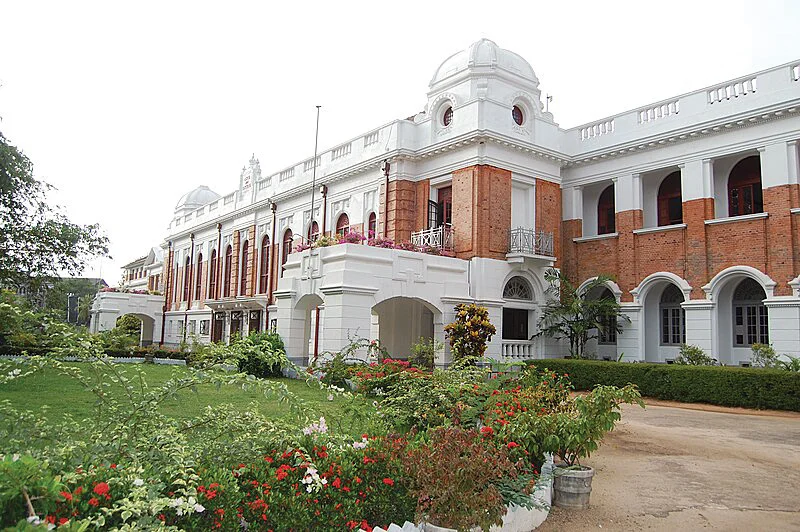
The gathering was actually of ‘Over Seventies’ but those of my generation present were mostly of the late eighties.
Even of them I shall mention only those whom I know at least by name. But, first, to those few of my years and older with whom speech was possible.
First among them, in more sense than one, was Nihal Seneviratne, at ninety-one probably the oldest present. There is no truth to the story that his state of crisp well-being is attributable to the consumption of gul-bunis in his school days. It is traceable rather to a life well lived. His practice of regular walks around the house and along the lane on which he lives may have contributed to his erect posture. As also to the total absence of a walking stick, a helper, or any other form of assistance as he walked into the Janaki hotel where this gathering took place.
Referencing the published accounts of his several decades-long service in Parliament as head of its administration, it would be moot to recall that his close friend and fellow lawyer, J E D Gooneratne, teased him in the following terms: “You will be a bloody clerk all your life”. He did join service as Second Assistant to the Clerk to the House and moved up, but the Clerk became the Secretary General. Regardless of such matters of nomenclature, it could be said that Nihal Seneviratne ran the show.
Others present included Dr. Ranjith de Silva, Surgeon, who was our cricket Captain and, to the best of my knowledge, has the distinction of never engaging in private practice.
The range of Dr. K L (Lochana) Gunaratne’s interests and his accomplishments within each are indeed remarkable. I would think that somebody who’d received his initial training at the AA School of Architecture in London would continue to have architecture as the foundation of his likes /dislikes. Such would also provide a road map to other pursuits whether immediately related to that field or not. That is evident in the leadership roles he has played in the National Academy of Sciences and the Institute of Town Planners among others. As I recall he has also addressed issues related to the Panadura Vadaya.
My memories of D L Seneviratne at school were associated with tennis. As happens, D L had launched his gift for writing over three decades ago with a history of tennis in Sri Lanka (1991). That is a game with which my acquaintance is limited to sending a couple of serves past his ear (not ‘tossing the ball across’ as he asked me to) while Jothilingam, long much missed, waited for his team mates to come for practices. It is a game at which my father spent much time both at the Railway sports club and at our home-town club. (By some kind of chance, I recovered just a week ago the ‘Fred de Saram Challenge Cup’ which, on his winning the Singles for the third time, Koo de Saram came over to the Kandana Club to hand over to him for keeps. They played an exhibition match which father won). D L would know whether or not, as I have heard, in an exhibition match in Colombo, Koo defeated Frank Sedgman, who was on his triumphant return home to Oz after he had won the Wimbledon tournament in London.
I had no idea that D L has written any books till my son brought home the one on the early history of Royal under Marsh and Boake, (both long-bearded young men in their twenties).
It includes a rich assortment of photographs of great value to those who are interested in the history of the Anglican segment of Christian missionary activity here in the context of its contribution to secondary school education. Among them is one of the school as it appeared on moving to Thurstan road from Mutwal. It has been extracted from the History of Royal, 1931, done by students (among whom a relative, Palitha Weeraman, had played a significant role).
As D L shows, (in contra-distinction to the Catholic schools) the CMS had engaged in a largely secular practice. Royal remained so through our time – when one could walk into the examination room and answer questions framed to test one’s knowledge of Christianity, Buddhism, Hinduism and Islam; a knowledge derived mostly from the lectures delivered by an Old Boy at general assembly on Friday plus readings from the Dhammapada, the Bhagavad Gita, the St. John’s version of the Bible or the Koran recited by a student at senior assembly on Tuesday / Thursday.
D L’s history of Royal College had followed in 2006.
His writing is so rich in detail, so precise in formulation, that I would consider this brief note a simple prompt towards a publisher bringing out new editions at different levels of cost.
It was also a pleasure to meet Senaka Amarasinghe, as yet flaunting his Emperor profile, and among the principal organisers of this event.
The encounter with I S de Silva, distinguished attorney, who was on Galle road close to Janaki lane, where I lived then was indeed welcome. As was that with Upali Mendis, who carried out cataract surgery on my mother oh so long ago when he was head of the Eye Hospital. His older brother, L P, was probably the most gifted student in chemistry in our time.
Most serendipitous perhaps was meeting a son of one of our most popular teachers from the 1950s, – Connor Rajaratnam. His cons were a caution.
by Gamini Seneviratne
Opinion
“Regulatory Impact Assessment – Not a bureaucratic formality but essentially an advocacy tool for smarter governance”: A response
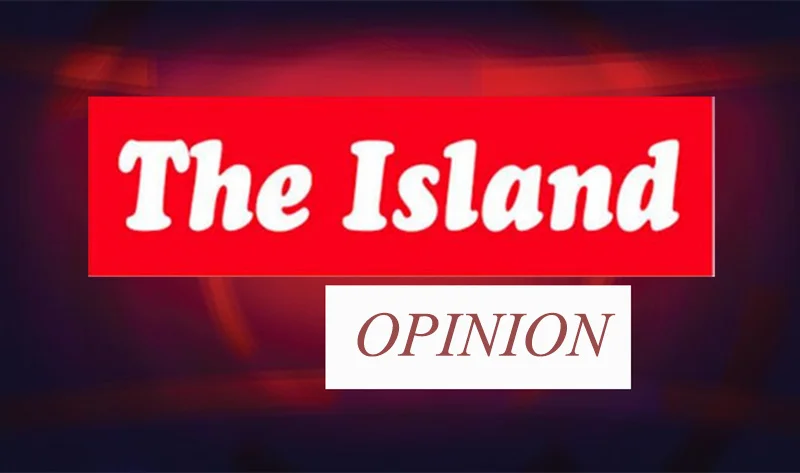
Having meticulously read and re-read the above article published in the opinion page of The Island on the 27 Nov, I hasten to make a critical review on the far-reaching proposal made by the co-authors, namely Professor Theekshana Suraweera, Chairman of the Sri Lanka Standards Institution and Dr. Prabath.C.Abeysiriwardana, Director of Ministry of Science and Technology
The aforesaid article provides a timely and compelling critique of Sri Lanka’s long-standing gaps in evidence-based policymaking and argues persuasively for the institutional adoption of Regulatory Impact Assessment (RIA). In a context where policy missteps have led to severe economic and social consequences, the article functions as an essential wake-up call—highlighting RIA not as a bureaucratic formality but as a foundational tool for smarter governance.
One of the article’s strongest contributions is its clear explanation of how regulatory processes currently function in Sri Lanka: legislation is drafted with narrow legal scrutiny focused mainly on constitutional compliance, with little or no structured assessment of economic, social, cultural, or environmental impacts. The author strengthens this argument with well-chosen examples—the sudden ban on chemical fertilizer imports and the consequences of the 1956 Official Language Act—demonstrating how untested regulation can have far-reaching negative outcomes. These cases effectively illustrate the dangers of ad hoc policymaking and underscore the need for a formal review mechanism.
The article also succeeds in demystifying RIA by outlining its core steps—problem definition, option analysis, impact assessment, stakeholder consultation, and post-implementation review. This breakdown makes it clear that RIA is not merely a Western ideal but a practical, structured, and replicable process that could greatly improve policymaking in Sri Lanka. The references to international best practices (such as the role of OIRA in the United States) lend credibility and global context, showing that RIA is not experimental but an established standard in advanced governance systems.
However, the article could have further strengthened its critique by addressing the political economy of reform: the structural incentives, institutional resistance, and political culture that have historically obstructed such tools in Sri Lanka. While the challenges of data availability, quantification, and political pressure are briefly mentioned, a deeper analysis of why evidence-based policymaking has not taken root—and how to overcome these systemic barriers—would have offered greater practical value.
Another potential enhancement would be the inclusion of local micro-level examples where smaller-scale regulations backfired due to insufficient appraisal. This would help illustrate that the problem is not limited to headline-making policy failures but affects governance at every level.
Despite these minor limitations, the article is highly effective as an advocacy piece. It makes a strong case that RIA could transform Sri Lanka’s regulatory landscape by institutionalizing foresight, transparency, and accountability. Its emphasis on aligning RIA with ongoing national initiatives—particularly the strengthening of the National Quality Infrastructure—demonstrates both pragmatism and strategic vision.
At a time, when Chairmen of statutory bodies appointed by the NPP government play a passive voice, the candid opinion expressed by the CEO of SLSI on the necessity of a Regulatory Impact Assessment is an important and insightful contribution. It highlights a critical missing link in Sri Lanka’s policy environment and provides a clear call to action. If widely circulated and taken seriously by policymakers, academics, and civil society, it could indeed become the eye-opener needed to push Sri Lanka toward more rational, responsible, and future-ready governance.
J. A. A. S. Ranasinghe,
Productivity Specialty and Management Consultant
(rathula49@gmail.com)
-

 News6 days ago
News6 days agoWeather disasters: Sri Lanka flooded by policy blunders, weak enforcement and environmental crime – Climate Expert
-
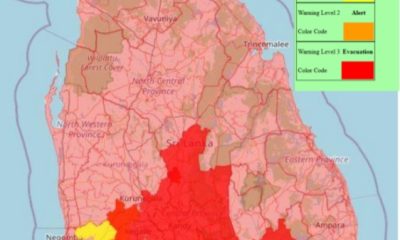
 Latest News6 days ago
Latest News6 days agoLevel I landslide RED warnings issued to the districts of Badulla, Colombo, Gampaha, Kalutara, Kandy, Kegalle, Kurnegala, Natale, Monaragala, Nuwara Eliya and Ratnapura
-

 Latest News7 days ago
Latest News7 days agoINS VIKRANT deploys helicopters for disaster relief operations
-
News3 days ago
Lunuwila tragedy not caused by those videoing Bell 212: SLAF
-

 Latest News7 days ago
Latest News7 days agoDepartment of Irrigation issues Critical flood warning to the Kelani river basin
-

 Latest News4 days ago
Latest News4 days agoLevel III landslide early warnings issued to the districts of Badulla, Kandy, Kegalle, Kurunegala, Matale and Nuwara-Eliya
-

 News2 days ago
News2 days agoLevel III landslide early warning continue to be in force in the districts of Kandy, Kegalle, Kurunegala and Matale
-

 Latest News7 days ago
Latest News7 days agoWarning for Cyclonic storm “Ditwah”













